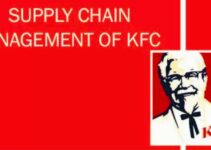DHL is a German international package delivery, logistics, courier, and mail service provider. Adrian Dalsey, Larry Hillblom, and Robert Lynn founded the company in 1969. Today, we’ll discuss the value chain analysis of DHL supply chain analysis; and primary and supporting activities in the process of value chain analysis Example Company. They are inbound and outbound logistics, operations, marketing, and customer service; infrastructure, HRM, technology, and procurement as an application of the value chain analysis process.
Substitutes of DHL
- DACHSER,
- Planzer Transport,
- CEVA Logistics,
- USPS,
- FedEx
- UPS
- Royal Mail
The Value chain analysis of DHL supply chain analysis would analyze the primary and supporting activities in the process of value chain analysis. They’re inbound and outbound logistics, operations, marketing, and services; infrastructure, HRM, technology, and procurement. Here’s supply chain analysis of DHL value chain analysis company example as follows;
Value Chain Analysis of DHL
Let’s discuss the primary and supporting activities involved in the process of value chain analysis of DHL supply chain analysis. It is an application of value chain analysis based on Porter’s model; some of the key elements and components of value chain analysis are as follows;
Primary Activities of DHL
Some of the five main primary activities in the value chain analysis of DHL supply chain analysis are as follows;
Inbound Logistics of DHL
I-Large & Diverse Network
DHL has a very large and diverse supplier network spread across more than 220 countries across the world. The logistics service-providing company strongly believes in inclusion, equity, and diversity. However, the diversified suppliers’ network helps the company add value and offer agile and innovative procurement solutions to the customers and the company.
Some of the main suppliers’ business partners of DHL are as follows;
- We Connect International
- Women’s Business Enterprise National Council (WBENC)
- NMSDC (National Minority Supplier Development Council)
- Disability IN
- CAMSC
II-Suppliers Code of Conduct
DHL has developed a very strict and clear code of conduct for its suppliers to ensure the sustainable behaviors of its suppliers in their operations. In fact, the company ensures that its supply chain partners, subcontractors, and suppliers comply with the company’s supplier code of conduct and engage in moral and ethical practices. The logistics company’s code of conduct focuses on the following areas;
- No child and forced labor
- Working hours and compensation plans
- Inclusion and diversity
- Collective bargaining and freedom of association
- Complying with Health and safety standards
- Disclosure of information
- Information security and data protection
- No bribery and corruption
- Trade regulations
Outbound Logistics of DHL
I-Distribution Network
DHL has established a very large distribution network comprising 250 aircraft, 800 terminals, and 1500 warehouses in roundabout 150 countries across the globe. The worldwide distribution network of the logistics service providing company makes sure that the company delivers the mail and packages to the customers on their doorsteps timely without any delays.
II-Transportation System
In order to ensure the complete transparency of the product flow, DHL implements a very advanced transportation system to ensure high reliability. The company employs a combination of systems and resources to meet the company’s specific needs and requirements. Some of the key features of the company’s outbound transport system are as follows;
- Real-time tracking
- Scheduled delivery
- Shipment consolidation
- Network planning
Operations of DHL
I-Warehouses
DHL has established a large network of 1500 warehouses in 60 countries across the world. The logistics service-providing company has multiple-user warehouses that have the capability to serve multiple manufacturers and systems. However, the company has strategically placed them in those regions that are easily accessible by industrial companies. Some of the functions of DHL warehousing facilities are as follows;
- Returns and delivery management
- Dispatching, picking, packing, and storage
- Managing temperature for the temperature-sensitive products
- Dedicated shared operations
Marketing & Sales of DHL
I-Media Channels
DHL employs multiple media channels for running ads for the promotion of its brand and products. The media channels are radio, TV, magazines, print, and digital media platforms. However, the objective of all of these channels is to amplify the company’s customer market reach and influence.
II-Sponsorships
Along with running marketing and advertisement campaigns, DHL sponsors various mega sporting events to target new segments of the customer market. Some of the main events that DHL has sponsored over the years are as follows;
- Manchester United
- Formula One
- South African Western Cape Rugby Union
- IMG Fashion
- Surf Life Saving Australia
- Indian Premier League
Services of DHL
I-Customer Service
DHL offers a wide range of post-delivery services to customers to amplify brand loyalty and customer satisfaction levels. Some of the main services the logistics company offers are as follows;
- Shipment tracking
- Getting a quote for your solution order
- Transit time
- Customer support service helpline
- Package claim
Supporting Activities of DHL
Some of the main supporting activities in the value chain analysis of DHL supply chain analysis are as follows;
Infrastructure of DHL
DHL has established a very large infrastructure comprising distribution and transportation channels, warehousing units, multiple modes of transportation, and another global network of staff. The worldwide infrastructure helps the logistics company to smoothly perform its operations and timely deliver the packages and mail to the customers.
HRM of DHL
DHL has employed roundabout over 600,000 employees in various countries across the world. The human resource management department plays a key role in building and maintaining a diverse workforce, offering benefits, and offering equal opportunities for all.
Technological Development of DHL
DHL invests approximately 1.1 billion Euros in research and development with the objective of finding efficient methods of transportation and conducting supply chain operations effectively. The technological development and efficient operations help the company to decrease costs and improve sustainable productivity.
Procurement of DHL
DHL is highly cautious about sustainable and ethical procurement and the procurement practices of the company’s supply chain partners. The company has set up specific guidelines and standards for suppliers to engage in ethical and sustainable practices and comply with human rights standards.
Conclusion: DHL Value Chain Analysis Example Company | Application of Value Chain Analysis Process
After an in-depth study of the value chain analysis of DHL; we have realized that DHL is the world’s leading German logistics service-providing company. If you are learning about the DHL value chain analysis example company; then you should keep in mind the abovementioned primary and supporting activities. They’re inbound and outbound logistics; operations, marketing and sales, and services; infrastructure, procurement, HRM, and technological development as an application of the value chain analysis process.
Ahsan is an accomplished researcher and has a deep insight in worldly life affairs. He goes Live 3 days a week on various social media platforms. Other than research writing, he’s a very interesting person.


